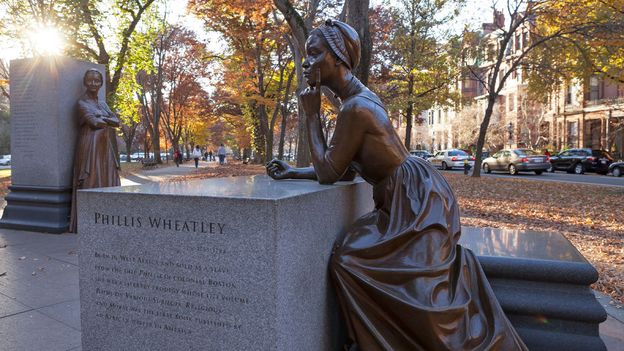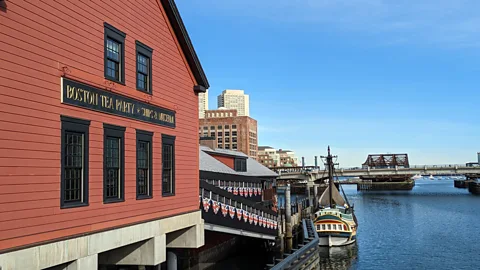The unsung Black poet who shaped the US

 Robin Catalano
Robin CatalanoAlthough the Wheatleys were not abolitionists (they enslaved several people, and segregated Phillis from them) they recognised Phillis’ talents and encouraged her to study Latin, Greek, history, theology and poetry. Inspired by the likes of Alexander Pope and Isaac Watts, she stayed up at night, writing heroic couplets and elegies to notable figures by candlelight. She published her first verse, in the Newport Mercury, at age 13.
While many New Englanders took note of the poet’s gifts, no American printer would publish a book by a Black writer. Poems on Various Subjects was eventually financed by Selina Hastings, Countess of Huntingdon, and published in London. As a 19-year-old in 1773, Phillis travelled to the city, escorted by the Wheatleys’ son. She was an instant sensation. Her celebrity, along with England’s criticism of a new nation that simultaneously subjugated her while comparing its own relationship to the Crown as slavery, led the Wheatleys to manumit her in 1774.
A keen observer, Phillis frequently wrote about significant moments in America’s fight for independence, carefully walking a fine line between being overtly political or critical of the colonial government as a Black woman. As a 14-year-old in 1768, she praised King George III in the poem To the King’s Most Excellent Majesty for repealing the Stamp Act. Two years later, in On the Death of Mr. Snider Murder’d by Richardson, she memorialised the killing of 12-year-old Christopher Snider by a Massachusetts-born Loyalist during a protest over imported British goods.
Soon after, in 1770, a skirmish between Colonists and British soldiers erupted in front of the Old State House, not far from where Phillis lived on King Street, culminating in the Boston Massacre. Today, a circle of granite pavers, its bronze letters dulled by age and thousands of footsteps, marks the spot where blood was spilled. Following the incident, Phillis was inspired to write the poem On the Affray in King Street, on the Evening of the 5th of March, 1770.
Source link




